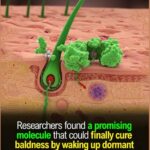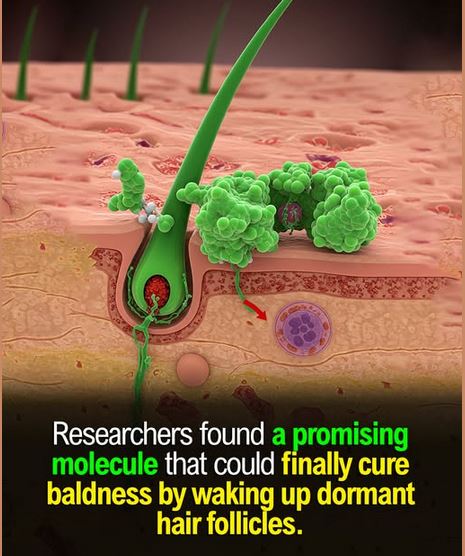The Search for Male Pattern Baldness CURE Throughout the Ages
For the first time ever, scientists may find the long-sought cure for Male Pattern Hair Loss (MPH), also known as Androgenetic Hair Loss.
Finasteride and Minoxidil Only FDA-Approved Hair Loss Treatments
 From ancient Egyptians to modern scientists, men have sought the cure for male pattern baldness. Despite medical advances, FDA has only approved two drugs since the 80’s to treat male pattern hair loss: Finasteride (Propecia) and Minoxidil (Rogaine). These two drugs work by very different mechanisms. Specifically, Finasteride decreases levels of DHT responsible for miniaturization and subsequent hair follicle death in the balding areas. While Minoxidil, a vasodilator, improves blood flow to the hair follicle promoting hair thickening and regrowth.
From ancient Egyptians to modern scientists, men have sought the cure for male pattern baldness. Despite medical advances, FDA has only approved two drugs since the 80’s to treat male pattern hair loss: Finasteride (Propecia) and Minoxidil (Rogaine). These two drugs work by very different mechanisms. Specifically, Finasteride decreases levels of DHT responsible for miniaturization and subsequent hair follicle death in the balding areas. While Minoxidil, a vasodilator, improves blood flow to the hair follicle promoting hair thickening and regrowth.
Therefore, topical or oral Minoxidil and Finasteride work synergistically on the key factors causing androgenetic male pattern baldness. Finasteride and Dutasteride decrease levels of DHT responsible for the miniaturization of hair follicles, which slows or stops further hair loss. While Minoxidil works to increase blood flow to the area restoring miniaturized follicles that resulting in thickening and regrowth of hair.
PP405 New Drug May Provide the Elusive Cure for Male Pattern Hair Loss in the Near Future
 Now for the first time in decades, UCLA scientists discover a major breakthrough for the treatment of male pattern hair loss, PP405, a revolutionary NEW molecule. In contrast to finasteride, a DHT hormonal blocker, PP405 activates dormant stem cells in the hair follicle. As a result, the hair follicle shifts from the resting telogen phase to the active anagen-growth phase.
Now for the first time in decades, UCLA scientists discover a major breakthrough for the treatment of male pattern hair loss, PP405, a revolutionary NEW molecule. In contrast to finasteride, a DHT hormonal blocker, PP405 activates dormant stem cells in the hair follicle. As a result, the hair follicle shifts from the resting telogen phase to the active anagen-growth phase.
Although these UCLA scientists conducted lab research on PP405 for almost a decade, the researches reported first Phase 1 clinic trial results showing safety and efficacy in March of 2024. In addition, topical administration of PP405 causes maximum penetration to the hair follicle without systemic absorption. Subsequently, the UCLA scientists formed Pelage Pharmaceuticals, a medical development company. to seek FDA approval and bring drug to market. As a matter of fact, Pelage Pharmaceuticals plans to begin Phase 3 clinical trials in 2026. Ultimately, their goal is to obtain FDA approval as the first-of-its-kind hair loss treatment.
Not all Hair loss is Androgenetic Male Pattern Hair Loss
Currently, Finasteride and Minoxidil are still the only two FDA-approved drugs to treat Androgenetic Male Pattern Hair Loss. These drugs aim to decrease scalp DHT to slow further hair loss and promote hair regrowth. The possible future treatment, PP405, also aims at reviving the damaged hair follicle, but by a new, revolutionary modality: activating dormant stem cells in the hair follicle.
Sometimes though, individuals having heard about recent FDA approval of new hair loss drugs get confused? But, these three new JAK-inhibitor hair-loss drugs recently approved by the FDA treat alopecia areata, not MPH: Olumiant, Litful, and Leqselvi. While androgenetic hair loss (MPH) is often a genetically inherited hair follicle sensitivity to DHT, alopecia areata is an auto immune condition . In contrast, JAK Inhibitor drugs for alopecia areata target the immune system and decrease inflammation. Actually, they show no efficacy in the treatment of MPH.
Although PP405 Discovery May CURE Male Pattern Baldness in the Near Future, Until Then State-of-the-Art MPH Treatments:
Although there are only two FDA-approved MPH treatments, Medical Wellness Center physicians have developed a multi-modal, treatment protocol for Androgenetic Male Pattern hair loss. Specifically, treatment protocols combine FDA approved MPH drugs, with a number of off-label use FDA-approved drugs and compounded formulas. For instance, treatment protocols combine a number of DHT-blocking modalities to stop or slow further follicle miniaturization and death . In addition, other modalities such as minoxidil, bimatoprost etc work to revitalize the hair follicle thickening and regrowing hair. If PP405 receives FDA approval, potentially by 2028, this drug will revolutionize the treatment of MPH. Below is a brief outline of the main drugs, FDA-approved and off-label use, that Medical Wellness Center offers to treat hair loss:
Therefore, combining multiple modalities would optimize and enhance the effectiveness of treatment:
1. Decrease scalp DHT with Avodart or Propecia/Proscar via inhibition of conversion of testosterone to DHT
2. Minoxidil -increasing blood supply to restore follicles that have been miniaturized by DHT
3. 2% Nizoral Shampoo inhibits binding of DHT to the hair follicle receptors.
4. Latisse (bimatoprost) or latanoprost to promote hair growth.
5. Topical Winlevi and Topical Spironolactone block DHT at the hair root
Regrow Your Own Hair with Medical Wellness Center State-of-the-Art Multi-Modal Hair Loss Treatments:
Medical Wellness Center works with Hair Transplant Physicians and Dermatologists to bring you the most advanced, cutting-edge treatments for hair loss. Visit: MedicalWellnessCenter.com and Regrow you own hair whether you are just noticing hair loss or have already had transplant surgery and need to maintain your graft.


